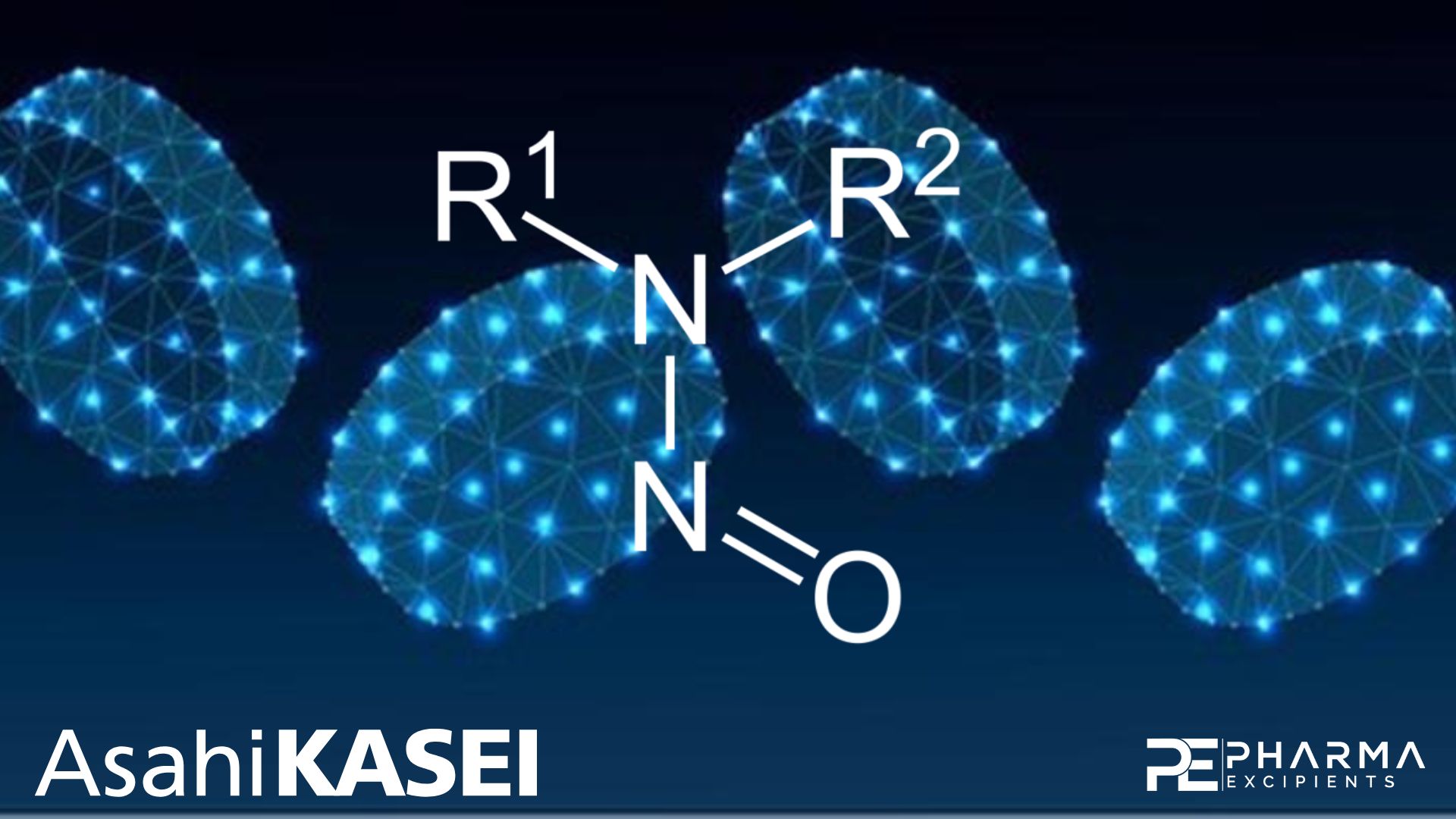N-nitrosamine risk assessments for oral dosage forms: Nitrite content in the microcrystalline cellulose (MCC)

INTRODUCTION
The effects of N-nitroso compounds on human health (particularly their role in gastric cancer) are well known.1 Certain N-nitrosamines are described as highly probable human carcinogens. They are usually formed by the reaction of secondary or tertiary amines with a source of a nitrosating agent, typically derived from nitrite.2,5
Oral excipients are considered as a potential risk factor during the drug product assessment.3 Being an excipient manufacturer, Asahi Kasei Corp. (Japan) is focused on mitigating the risk and providing information about the safe use of excipients.
In most cases, the nitrite contribution is dominated by the highest formula % excipients. Thus, the fillers/diluents which are typically used in larger proportions should be considered as a potential risk factor.4
MCC is widely used in pharmaceutical development and is one of the most common fillers /diluents contributed to oral solid dosage form formulations, usually present in much higher concentration compared with other excipients.6 So, the high nitrite content in MCC can be a significant risk for nitrosamine formation and consequently patient health.
Boetzel R.et al presented the results of eight excipients including their origin and different batches along with the correspondent statistics for the nitrite level. The evaluation of these results also showed the differences between various suppliers and between batches. In this study, the nitrite content in MCC from nine suppliers showed a spread from 0.04μg/g to 2.4μg/g, with a mean of 0.70 μg/g 4
The aim of this investigation was to test the nitrite and nitrate content in the excipients produced by Asahi Kasei Corp. (Japan) to provide scientifically based data for N-nitrosamine risk assessment in oral formulations.
MATERIALS AND METHODS
Materials. MCC grades as CeolusTM KG-1000, KG-802, UF-711, UF-702, PH-101, PH-102 (Asahi Kasei Corp., Japan)
Ion chromatography method (IC) developed by Asahi Kasei in collaboration with TOYO Inspection Center (Japan).
Test methodology: Suppressed ion chromatography
Column: Anion Exchange Chromatography Column (4.6mm I.D×15cm)
Mobile phase: Sodium Carbonate / Sodium Hydrogen Carbonate eluent solution
Flow rate: 1.0 mL/min
Oven temperature: 40°C
Sample injection volume: 30-100μL
Detector: UV-VIS detector (Wavelength 210 nm)
The LOD (Limit of Detection) is 0.008μg/g.

RESULTS
The nitrite and nitrate content of CeolusTM KG-1000, KG-802, UF-711, UF-702 and PH-101 and PH-102 was determined by ion chromatography method and systemized in Table 1. In accordance with the used quantification method, the LOD of nitrites comprised 0.008μg/g. In the majority of tested batches of MCC grades CeolusTM PH-101 and PH-102 the nitrite content was lower than LOD (0.008μg/g). In all tested batches of grades CeolusTM KG-802, KG-1000, UF-702, UF-711the nitrite level has not been detected. At the same time, the nitrate level was very low and didn’t exceed 0.112 μg/g.
Being an MCC/CeolusTM manufacturer, Asahi Kasei Corp. can explain the achieved results by process features. To minimize the appearance of undesirable impurities, secondary and tertiary amines, as well as quaternary ammonium salts or amide solvents are not used in the manufacturing process of products. Furthermore, sodium nitrite esters or nitrite, reagents or catalysts are not used.
CONCLUSION
CeolusTM demonstrated a very low level of nitrite and nitrate (lower than 0.012 and 0.112 μg/g, respectively) that can allow mitigating nitrosamine formation in the drug products with secondary or tertiary amines.
Obtained results justified with Asahi Kasei Corp.’s manufacturing process features allow to do the evidence-based choice of MCC-grades with low nitrite content for the formulation of oral dosage form formulations with low nitrosamine-associated risk.
Authors: Takako Koyamatsu, Shohei Mikami, Obata Kenji, Julia Shmyrova
Asahi Kasei Europe GmbH, Fringsstrasse 17, 40221 Düsseldorf, Germany; julia.shmyrova [at]asahi-kasei.eu.
Download the research paper as PDF here or click at the picture: N-nitrosamine risk assessments for oral dosage forms
REFERENCE
1. Bruning-Fann CS, Kaneene JB The effects of nitrate, nitrite and N-nitroso compounds on human health: a review. Veterinary and Human Toxicology, 01 Dec 1993, 35(6):521-538
2. Ashworth Ian W, D O, Teasdale Andrew, Whiting Matthew. Potential for the formation of N-nitrosamines during the manufacture of active pharmaceutical ingredients: an assessment of the risk posed by trace nitrite in water. Org. Process Res. Dev. 2020;24(9):1629–1646.
3. IPEC. The Role of Excipients in Determining N-Nitrosamine Risks for Drug Products. March 2022
4. Boetzel R., Schlingemann J., Hickert, S., Korn Ch. et al. A Nitrite Excipient Database: A useful Tool to Support N-Nitrosamine Risk Assessments for Drug Products. J Pharm Sci.2022
5. FDA. Control of Nitrosamine Impurities in Human Drugs. 2021. Available from:
https://www.fda.gov/media/141720/download.
6. Sheskey Paul J, H BC, Moss Gary P, Goldfarb David J. Handbook of Pharmaceutical
Excipients. Pharmaceutical Press; 2020.
Request a sample or more information of CeolusTM MCC from Asahi Kasei:


